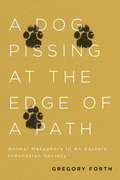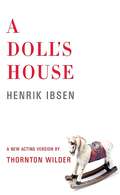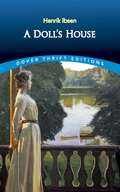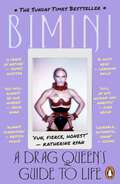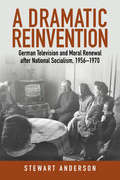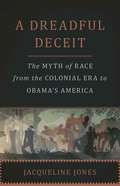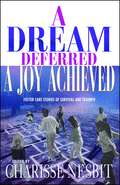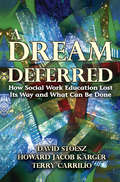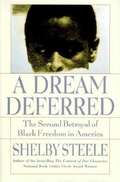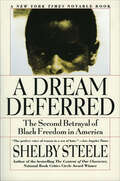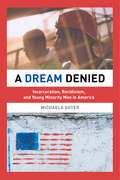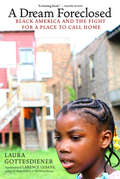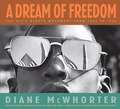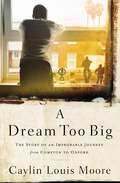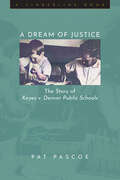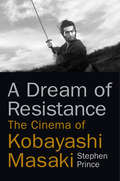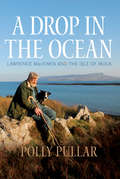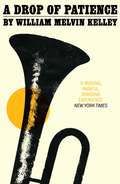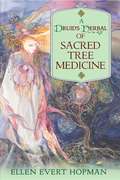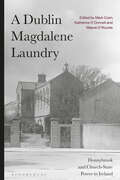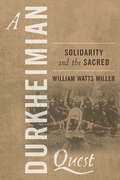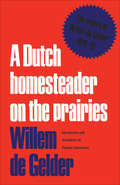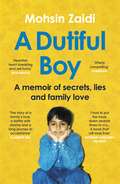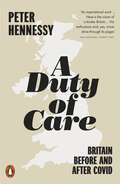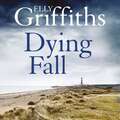- Table View
- List View
A Dog Pissing at the Edge of a Path: Animal Metaphors in an Eastern Indonesian Society
by Gregory ForthThe Nage people of the eastern Indonesian island of Flores refer to someone who begins something but is regularly distracted by other matters as "a dog pissing at the edge of a path." In this first comprehensive study of animal metaphors in a non-Western society, Gregory Forth focuses on how the Nage understand metaphor and use their knowledge of animals to shape specific expressions. Based on extensive field research, A Dog Pissing at the Edge of a Path explores the meaning and use of over 560 animal metaphors employed by the Nage. Investigating how closely their indigenous concept of pata péle corresponds to the Greek-derived English concept of metaphor, Forth demonstrates that the Nage people understand these figures of speech in the same way as Westerners - namely as conventional ways of speaking about people and objects, not expressions of an essential identity between their animal vehicles and human referents. Theoretically engaging with anthropology's recent ontological turn, the book considers whether metaphors reveal significant differences in conceptions of human-animal relations, the human-animal contrast, and human understanding of other humans in different parts of the world. An incredible catalogue of animal-based linguistic art and Nage verbal conventions, A Dog Pissing at the Edge of a Path illuminates essential features of metaphorical thought everywhere.
A Doll's House
by Henrik Ibsen Thornton Wilder"In [Wilder's] A Doll's House . . . the relationship of dialogue to action is very special, like nothing that had been heard on stage before."--David Hammond, PlayMakers Repertory CompanyNot staged since its Broadway premiere starring Ruth Gordon in 1937, the first-ever publication of this adaptation of Henrik Ibsen's classic drama is revitalized through the shrewd lens of American drama master, Thornton Wilder. With his famous, clarifying dialogue, Wilder uproots this classic from Norway and funnels it through an American lens. The marriage of Ibsen's famed naturalistic style melds with Wilder's knack for emotional nuance to create a rich, demonstrative edition of the revered standard A Doll's House.Henrik Ibsen has often been referred to as the father of realistic drama. The Norwegian playwright is best known for his major works Brand, Peer Gynt, Emperor and Galilean, A Doll's House, Ghosts, An Enemy of the People, The Wild Duck, Hedda Gabler, and The Master Builder.Thornton Wilder was an accomplished novelist and playwright in the twentieth century. Two of his four major plays garnered Pulitzer Prizes, Our Town (1938) and The Skin of Our Teeth (1943). His play The Matchmaker was later adapted into the record-breaking musical Hello, Dolly! The Bridge of San Luis Rey, one of his seven novels, won the Pulitzer Prize in 1928, and his next-to-last novel, The Eighth Day received the National Book Award (1968). Our Town continues to be the most produced American play in the world.
A Doll's House: 30 Books and Teaching Unit
by Henrik IbsenOne of the best-known, most frequently performed of modern plays, A Doll's House richly displays the genius with which Henrik Ibsen pioneered modern, realistic prose drama. In the central character of Nora, Ibsen epitomized the human struggle against the humiliating constraints of social conformity. Nora's ultimate rejection of a smothering marriage and life in "a doll's house" shocked theatergoers of the late 1800s and opened new horizons for playwrights and their audiences.But daring social themes are only one aspect of Ibsen's power as a dramatist. A Doll's House shows as well his gifts for creating realistic dialogue, a suspenseful flow of events and, above all, psychologically penetrating characterizations that make the struggles of his dramatic personages utterly convincing. Here is a deeply absorbing play as readable as it is eminently playable, reprinted from an authoritative translation.
A Drag Queen's Guide to Life: A Drag Queen's Guide To Life
by Bimini Bon BoulashThe perfect gift for Bimini and Drag Race fans!'MAGIC! A fun, fierce, honest origin story of how to drag yourself up out of trouble and become an icon' Katherine Ryan'A triumph for UK queer culture' Travis Alabanza'Eye-opening, intelligent, thoughtful as well as sassy and surprising - a must read' Lorraine Kelly_______________________________________A witty and inspiring guide to transforming your life through lessons from drag, by the UK's favourite drag queen and star of RuPaul's Drag Race UK, Bimini Bon Boulash.From being told she couldn't have dance lessons as a kid in Great Yarmouth to having to conform to the stereotypes of the gay scene in London's East End, people have always been trying to put Bimini Bon Boulash in a box. It was only through discovering the art of drag that she began to fight back against those preconceptions, and understand that she had the power to define herself.In A Drag Queen's Guide to Life, Bimini tells the story of how drag took her from the brink of self-destruction to become a gag-inducing, death-dropping, plant-based superstar. Drawing on her own experience as a nonbinary person in a binary world, as well as inspirational stories from history, politics, pop culture and fashion, she uses all her wit, charm and kindness to show us how to lead the lives we wish we could lead, through the life-changing magic of dragging up._______________________________________'Radical, life-affirming, and utterly important for this time' Riyadh Khalaf'A very important read' Gottmik'She's a superstar' Kathy Burke'You will always be our winner' Sadiq Khan, Mayor of London'A force of nature' James AcasterSunday Times Bestseller, October 2021
A Dramatic Reinvention: German Television and Moral Renewal after National Socialism, 1956–1970
by Stewart AndersonFollowing World War II, Germany was faced not only with the practical tasks of reconstruction and denazification, but also with the longer-term mission of morally “re-civilizing” its citizens—a goal that persisted through the nation’s 1949 split. One of the most important mediums for effecting reeducation was television, whose strengths were particularly evident in the thousands of television plays that were broadcast in both Germanys in the 1950s and 1960s. This book shows how TV dramas transcended state boundaries and—notwithstanding the ideological differences between East and West—addressed shared issues and themes, helping to ease viewers into confronting uncomfortable moral topics.
A Dreadful Deceit: The Myth of Race from the Colonial Era to Obama's America
by Jacqueline JonesIn 1656, a planter in colonial Maryland tortured and killed one of his slaves, an Angolan man named Antonio who refused to work the fields. Over three centuries later, a Detroit labor organizer named Simon Owens watched as strikebreakers wielding bats and lead pipes beat his fellow autoworkers for protesting their inhumane working conditions. Antonio and Owens had nothing in common but the color of their skin and the economic injustices they battled--yet the former is what defines them in America’s consciousness. In A Dreadful Deceit, award-winning historian Jacqueline Jones traces the lives of these two men and four other African Americans to reveal how the concept of race has obscured the factors that truly divide and unite us. Expansive, visionary, and provocative, A Dreadful Deceit explodes the pernicious fiction that has shaped American history.
A Dream Deferred, a Joy Achieved
by Charisse NesbitA Dream Deferred, a Joy Achieved is a positive look at the foster care system through stories of its survivors who show there is hope for the future, even in a system often identified by abuse and neglect. With a unique perspective, this collection of inspiring stories is a testament to the fighting spirit of former foster children, and an inspiration to others currently in the same situation to emerge from the system as successful productive members of society. The stories are true to life, sometimes painful, yet full of hope, revealing those who have graduated and gone on to make the most of their lives, in spite of their challenging beginnings. The stories within A Dream Deferred, a Joy Achieved teach the important lesson that one should never give up, even if circumstances aren't the brightest and opportunity isn't immediately present. Those dreams will still be there in the future, and it is up to the foster children to make the best of their current situations.
A Dream Deferred: How Social Work Education Lost Its Way and What Can be Done
by Howard KargerFrom its inception in the late nineteenth century, social work has struggled to carry out the complex, sometimes contradictory, functions associated with reducing suffering, enhancing social order, and social reform. Since then, social programs like the implementation of welfare and the expansion of the service economy-which should have augured well for American social work-instead led to a continued loss of credibility with the public and within the academy.A Dream Deferred chronicles this decline of social work, attributing it to the poor quality of professional education during the past half-century. The incongruity between social work's promise and its performance warrants a critical review of professional education. For the past half-century, the fortunes of social work have been controlled by the Council of Social Work Education, which oversees accreditation of the nation's schools of social work. Stoesz, Karger, and Carrilio argue that the lack of scholarship of the Board of Directors compromises this accreditation policy. Similarly, the quality of professional literature suffers from the weak scholarship of editors and referees. The caliber of deans and directors of social work educational programs is low and graduate students are ill-prepared to commence studies in social work. Further complicating this debate, the substitution of ideology for academic rigor makes social work vulnerable to its critics.The authors state that, since CSWE is unlikely to reform social work education, schools of social work should be free to obtain accreditation independently, and they propose criteria for independent accreditation. A Dream Deferred builds on the past, presents a bracing critique of the present, and proposes recommendations for a better future that cannot be ignored or dismissed.
A Dream Deferred: The Second Betrayal of Black Freedom in America
by Shelby SteeleFrom the best-selling author of "The Content of Our Character", comes a timely and controversial new essay collection that focuses on the untold story behind today's polarized racial politics.
A Dream Deferred: The Second Betrayal of Black Freedom in America
by Shelby SteeleAward-winning author Shelby Steele’s essay collection A Dream Deferred reveals the untold story behind the polarized racial politics in America today. A New York Times Notable BookThrough thought-provoking insights, National Book Critics Circle Award Winner Shelby Steele argues that a second betrayal of black freedom in the United States—the first one being segregation—emerged from the civil rights era when the country was overtaken by a powerful impulse to redeem itself from racial shame. According to Steele, 1960s liberalism had as its first and all-consuming goal the expiation of American guilt rather than the careful development of true equality between the races. In four densely argued essays, Steele takes on the familiar questions of affirmative action, multiculturalism, diversity, Afro-centrism, group preferences, victimization—and what he deems to be the atavistic powers of race, ethnicity, and gender, the original causes of oppression. A Dream Deferred is an honest, courageous look at the perplexing dilemma of race and democracy in the United States—and what we might do to resolve it.“Steele has given eloquent voice to painful truths that are almost always left unspoken in the nation’s circumscribed public discourse on race.” —New York Times“Steele’s skill compares with that of James Baldwin, Richard Wright, or Frederick Douglass.” —Chicago Tribune“Sweeping in its formulations . . . Perceptive . . . Steele is a clever critic.” —Los Angeles Times Book Review“Deeply engaging public-policy criticism.” —Booklist
A Dream Denied: Incarceration, Recidivism, and Young Minority Men in America
by Michaela SoyerYoung minority men are often portrayed in popular media as victims of poverty and discrimination. A Dream Denied delves deeper, investigating the social and cultural implications of the "American dream" narrative for young minority men in the juvenile justice systems in Boston and Chicago. This book connects young male offenders' cycles of desistance and recidivism with normative assumptions about success and failure in American society, exposing a tragic disconnect between structural reality and juvenile justice policy. This book challenges us to reconsider how American society relates to its most vulnerable members, how it responds to their personal failures, and how it promises them a better future.
A Dream Foreclosed
by Clarence Lusane Laura GottesdienerTold through the eyes of four homeowners-a grandmother in Detroit, an entrepreneur in rural North Carolina, a man in Chattanooga, and a mother in Chicago-A Dream Foreclosed presents a people's history of the U.S. financial crisis and the rise of a people's movement for economic justice, dignity, and freedom from foreclosure. With power and humanity, Laura Gottesdiener bears witness to the ordinary people organizing their communities to challenge the banks and legal system. Their stories are extraordinary but the situation is all too common.The ongoing mortgage crisis has created one of the longest and largest mass displacements in U.S history. While profiting from government bailouts, banks have evicted more than ten million Americans from their homes, their life savings, and their dreams. As many of the families victimized by bank fraud, predatory loans and other corporate crimes are African American, communities of color have been among the most outspoken and organized in confronting the banks.Woven throughout Gottesdiener's page-turning narrative are clear explanations of the origins of the crisis, the consequences for housing, and how community organizing and social movements are having national impact.PRAISE FOR LAURA GOTTESDIENER ANDA DREAM FORECLOSEDAlice Walker, Pulitzer Prize-winning author of The Color Purple"I'm spreading the word about Laura Gottesdiener's FINE book wherever I go and wherever I am. [It's] a wonderful book."Naomi Klein, author of The Shock Doctrine"A riveting book."Ralph NaderLaura Gottesdiener has the acute eye and pen of a young progressive star with extraordinary talent. Her pages should grip you with motivational indignation."Johanna Fernandez professor in the Department of History at Baruch College "From the time of their capture in Africa, through Emancipation and the Great Migration, to the national economic and housing crisis of today, people of African descent in the United States have been defined by their search for home. Using the dreams and aspirations of four families as her point of departure, Laura Gottesdiener narrates a beautifully crafted story about predatory lending, foreclosure abuse, the racial politics of home ownership, and the brave struggles launched by African American communities to keep their dignities and their homes. ... a powerful, impressive and page-turning testimony that ordinary people can fight back and win."Noam Chomsky"The legislation to rescue the perpetrators of the current financial crisis included provisions for limited compensation to their victims...the enormity of the crime strikes home vividly in the heart-rending accounts of those who are brutally thrown out of their modest homes - for African Americans particularly, almost all they have - then survive in the streets, struggle on, and sometimes even regain something of what was stolen from them thanks to the courageous and inspiring work of the home liberation activists, now reinforced by the Occupy movement. All recounted with historical depth and analytic insight."Tim Wise "A brilliant and needed narrative by an insightful and inspiring author."Clarence Lusane, author of The Black History of the White House "[a] brilliant discourse on the battle over home and community by African Americans... [w]e owe Gottesdiener a great debt for her research and powerful argument that permeates A Dream Foreclosed. ... She takes sides in this battle and gives voice to those who are rarely if ever heard."Mumia Abu-Jamal , Counterpunch"A Dream Foreclosed finds beauty amidst immense pain and suffering-the beauty of people continuing to fight back against rapacious banks, the politicians they buy and the lawyers they hire. It is a work both beautiful and terrible that deserves to be read by many."Marc Lamont Hill, Huffington Post Live"An incredible book...a great set of stories being told here...and more importantly, a powerful narrative about the relationship between black people and ownership"
A Dream Of Freedom: The Civil Rights Movement From 1954 to 1968
by Diane McwhorterA stirring history of the Civil Rights movement in America by the Pulitzer Prize-winning author of CARRY ME HOME. In this history of the modern Civil Rights movement, Pulitzer Prize-winning author Diane McWhorter focuses on the monumental events that occurred between 1954 (the year of Brown versus the Board of Education) and 1968 (the year that Dr. Martin Luther King, Jr. was assasinated). Beginning with an overview of the movement since the end of the Civil War, McWhorter also discusses such events as the 1956 MTGS bus boycott, the 1961 Freedom Rides, and the 1963 demonstration in Birmingham, Alabama, among others.
A Dream Too Big: The Story of an Improbable Journey from Compton to Oxford
by Caylin Louis MooreIn this inspiring and provocative memoir, Caylin Moore tells the against-all-odds story of his rise from cruel poverty in gang-ridden Los Angeles to academic success at Oxford University, with hope as his compass.By all rights, Caylin Louis Moore should be dead, in prison, or stalking the streets of Compton with his fellow gang-members. Instead, he’s a Rhodes Scholar, author, speaker, and role model for every kid deprived of hope in downtrodden communities. A Dream Too Big is the story of Moore’s exodus from one of the most impoverished, gang-infested communities in the United States to the golden, dreaming spires of Oxford, England.After Moore’s mother gathered her three young children and fled an abusive husband of nine years, leaving behind a comfortable middle-class life, Moore found himself in a bewildering and dangerous environment. The family lived in a neighborhood ruled by the Bloods, and Caylin often lay awake at night, terrified by both the sounds of gunfire outside and the scratching of rats and roaches moving in the walls. When Moore’s father was convicted of murder and his mother was sexually assaulted in the hospital while recovering from open-heart surgery, Moore was forced to enter adulthood prematurely. Embracing his mother’s steely faith in God and education, Moore skirted the gangs and the endemic violence of Compton to excel on the football field and in the classroom.Academics and athletics led to college scholarships, which led to a Fulbright and eventually the Rhodes Scholarship. Along the way, Moore cofounded a student organization that brought college athletes into underserved classrooms as inspirational speakers, role models, and mentors. Moore’s eye-opening, inspirational story proves that, contrary to what others told him on his journey, there is no such thing as a dream too big. "A dream too big is a truly special book. Caylin's story is not just inspirational, it is instructional. I have admired him and his journey for a long time; read this book and you'll understand why." --Wes Moore, bestselling author of The Other Wes Moore, CEO of Robin Hood "I loved this story of triumph in praise of a sacrificial single mom and a kid who, against all odds, fought hunger-pains and gangs to make a dream-too-big become a dream-come-true. Through gunshots and the temptations of inner city poverty, Caylin Moore laced up his cleats, outran gangs, and caught the 6:00am bus on an empty stomach. A future world-changer, Caylin has penned an inspiring tale that should be mandatory reading for every student, parent, and anyone else interested in the success of those who will shape and define our future." -- Ron Hall, #1 New York Times bestselling author of Same Kind of Different as Me and Workin' Our Way Home
A Dream of Justice: The Story of Keyes v. Denver Public Schools (Timberline Books)
by Pat PascoeA Dream of Justice is Colorado state senator and former teacher Pat Pascoe’s firsthand account of the decades-long fight to desegregate Denver’s public schools. Drawing on oral histories and interviews with members of the legal community, parents, and students, as well as extensive institutional records, Pascoe offers a compelling social history of Keyes v. School District No. 1 (Denver). Pascoe details Denver’s desegregation battle, beginning with the citizen studies that exposed the inequities of segregated schools and Rachel Noel’s resolution to integrate the system, followed by the momentous pro-integration Benton-Pascoe campaign of Ed Benton and Monte Pascoe for the school board in 1969. When segregationists won that election and reversed the integration plan for northeast Denver, Black, white, and Latino parents filed Keyes v. School District No. 1. This book follows the arguments in the case through briefs, transcripts, and decisions from district court to the Supreme Court of the United States and back, to its ultimate order to desegregate all Denver schools “root and branch.” It was the first northern city desegregation suit to be brought before the Supreme Court. However, with the end of court-ordered busing in 1995, schools quickly resegregated and are now more segregated than before Keyes was filed. Pascoe asserts that school integration is a necessary step toward eliminating systemic racism in our country and should be the objective of every school board. A Dream of Justice will appeal to students, scholars, and readers interested in the history of civil rights in America, Denver history, and the history of US education.
A Dream of Resistance: The Cinema of Kobayashi Masaki
by Stephen PrinceCelebrated as one of Japan’s greatest filmmakers, Kobayashi Masaki’s scorching depictions of war and militarism marked him as a uniquely defiant voice in post-war Japanese cinema. A pacifist drafted into Japan’s Imperial Army, Kobayashi survived the war with his principles intact and created a body of work that was uncompromising in its critique of the nation’s military heritage. Yet his renowned political critiques were grounded in spiritual perspectives, integrating motifs and beliefs from both Buddhism and Christianity. A Dream of Resistance is the first book in English to explore Kobayashi’s entire career, from the early films he made at Shochiku studio, to internationally-acclaimed masterpieces like The Human Condition, Harakiri, and Samurai Rebellion, and on to his final work for NHK Television. Closely examining how Kobayashi’s upbringing and intellectual history shaped the values of his work, Stephen Prince illuminates the political and religious dimensions of Kobayashi’s films, interpreting them as a prayer for peace in troubled times. Prince draws from a wealth of rare archives, including previously untranslated interviews, material that Kobayashi wrote about his films, and even the young director’s wartime diary. The result is an unprecedented portrait of this singular filmmaker.
A Drop in the Ocean: Lawrence MacEwen and the Isle of Muck
by Polly Pullar&“A lively and entertaining account of the highs and lows of life on this small windswept island . . . A must read for people interested in Scottish history.&” —Scottish Field Lawrence MacEwen&’s family has owned Muck, a small island in the Scottish Hebrides, since 1896. A wonderfully benevolent, eccentric character, he is passionate about the island and its continuing success, and has kept diaries all his life. Wildlife writer Polly Pullar paints a portrait of a man and a community, unveiling a uniquely human story punctuated with liberal amounts of humor as well as heart-rending tragedy, always dominated by the vagaries of the sea. Filled with extraordinary tales and priceless observations, this is not only an entertaining read but an important part of Scottish social history. Tracing Lawrence&’s story from the time his mother brought him home from the hospital on the mainland up to the present day, it offers tales of coal puffers and livestock transportation on steamers and small boats, extraordinary chance meetings and adventures that eventually led him to finding his wife, Jenny, on the island of Soay. It&’s also a book about the small hard-working community of thirty souls on this fertile island of just fifteen hundred acres. Residents work closely with the MacEwen family, in a thriving farm, a market garden, a modern school, a busy tearoom, a craft shop, and a winter shoot. It&’s a fascinating journey to a place that opened a guesthouse in 2013—just a few months after Muck, one of the last places in the UK to receive twenty-four hour power, left its unreliable generator behind for solar panels and wind turbines.
A Drop of Patience
by William Melvin KelleyAt the age of five, a blind African-American boy is handed over to a brutal state home. Here Ludlow Washington will suffer for eleven years, until his prodigious musical talent provides him an unlikely ticket back into the world.The property of a band, playing for down-and-outs in a southern dive, Ludlow's pioneering flair will take him to New York and the very top of the jazz scene - where his personal demons will threaten to drag him back down to the bottom.A Drop of Patience is the story of a gifted and damaged man entirely set apart - by blindness, by race, by talent - who must wrestle with adversity and ambition to generate the acceptance and self-worth that have always eluded him.
A Druid's Herbal of Sacred Tree Medicine
by Ellen Evert HopmanAn in-depth look at the history, herbal uses, and spiritual aspects of the sacred trees in the ancient Celtic Ogham Tree Alphabet • Details the 20 trees of the ogham alphabet and their therapeutic and magical virtues • Examines the Forest Druid practices associated with each tree as well as the traditional uses in Native American medicine • Describes the Celtic Fire Festivals and how each tree is featured in these holy days • By the author of A Druid’s Herbal for the Sacred Earth YearThe Druids used the ancient Ogham Tree Alphabet to work magic and honor the dead, surrounding each letter with medicinal and spiritual lore. Poets and bards created a secret sign language to describe the letters, each of which is named for a tree or a plant. For centuries this language was transmitted only orally in order to protect its secrets.Combining her extensive herbal knowledge and keen poetic insight, Ellen Evert Hopman delves deeply into the historic allusions and associations of each of the 20 letters of the Ogham Tree Alphabet. She also examines Native American healing methods for possible clues to the way ancient Europeans may have used these trees as healing agents. Druidic spiritual practices, herbal healing remedies, and plant lore are included for each tree in the alphabet as well as how each is used in traditional rituals such as the Celtic Fire Festivals and other celebrations. Hopman also includes a pronunciation guide for the oghams and information on the divinatory meanings associated with each tree.
A Dublin Magdalene Laundry: Donnybrook and Church-State Power in Ireland
by Mark Coen Katherine O’Donnell Maeve O’RourkeA Durkheimian Quest
by William Watts MillerDurkheim, in his very role as a 'founding father' of a new social science, sociology, has become like a figure in an old religious painting, enshrouded in myth and encrusted in layers of thick, impenetrable varnish. This book undertakes detailed, up-to-date investigations of Durkheim's work in an effort to restore its freshness and reveal it as originally created. These investigations explore his particular ideas, within an overall narrative of his initial problematic search for solidarity, how it became a quest for the sacred and how, at the end of his life, he embarked on a project for a new great work on ethics. A theme running through this is his concern with a modern world in crisis and his hope in social and moral reform. Accordingly, the book concludes with a set of essays on modern times and on a crisis that Durkheim thought would pass but which now seems here to stay.
A Dutch Homesteader On The Prairies: The Letters of Wilhelm de Gelder 1910-13
by Herman Ganzevoort Willem De GelderThe letters in this volume, found in the original Dutch in the archives of the Netherlands Emigration Service in Holland, form a unique chronicle of one European homesteader in Saskatchewan from 1910 to 1913. They were written by Willem dr Gelder whose experience as a homesteader was typical of that of hundreds of thousands of newcomers to the prairies in the greatest years of western expansion just before the First World War. As a European immigrant he was able to write from a special perspective often ignored in Anglo-Saxon accounts of western development. Minute and perceptive observations of daily life are contained in his letters; together with the recollections of friends and neighbours who spoke well of him, this volume forms the portrait of a singular man who personified the toughness and persistence of the western pioneer. De Gelder was born in the 1880s in Doorn, the son of a well-to-do banker, and received all the benefits of birth in an upper-class home, including a university education. He came to Canada in 1910 and by the 1920s he had become a successful homesteader owning a half-section of land, meeting his bills, and joining in the community life. But in 1922 he rented out his land, went to the Netherlands to see his family, and returning to Canada he disposed of his homestead – and vanished. This book traces the compass of his life in Canada, revealing the doubts and fears which culminated in his disappearance; it highlights the anguish that all immigrants, new and old, suffered when they took the crucial step of beginning a new life.
A Dutiful Boy: A memoir of secrets, lies and family love (Winner of the LAMBDA 2021 Literary Award for Best Gay Memoir/Biography)
by Mohsin ZaidiWINNER of the Polari First Book Prize 2021WINNER of the LAMBDA 2021 Literary Award for Best Gay Memoir/BiographyA Dutiful Boy is Mohsin's personal journey from denial to acceptance: a revelatory memoir about the power of love, belonging, and living every part of your identity.Growing up in a devout Muslim household, it felt impossible for Mohsin to be gay. Unable to be open with his family, and with difficult conditions at school, he felt his opportunities closing around him. Despite the odds, Mohsin's perseverance led him to become the first person from his school to attend Oxford University, where new experiences and encounters helped him to discover who he truly wanted to be. Mohsin was confronted with the biggest decision he would ever make: to live the life that was expected of him or to live as his authentic self.A Guardian, GQ, and New Statesman Book of the Year'Genuinely inspiring... Beautifully written, dignified and ultimately redemptive, this challenging story abounds with light and love' Attitude | 'An Incredibly important read' Jyoti Patel
A Duty of Care: Britain Before and After Covid
by Peter HennessyOne of our most celebrated historians shows how we can use the lessons of the past to build a new post-covid society in BritainThe 'duty of care' which the state owes to its citizens is a phrase much used, but what has it actually meant in Britain historically? And what should it mean in the future, once the immediate Covid crisis has passed?In A Duty of Care, Peter Hennessy divides post-war British history into BC (before covid) and AC (after covid). He looks back to Sir William Beveridge's classic identification of the 'five giants' against which society had to battle - want, disease, ignorance, squalor and idleness - and laid the foundations for the modern welfare state in his wartime report. He examines the steady assault on the giants by successive post-war governments and asks what the comparable giants are now. He lays out the 'road to 2045' with 'a new Beveridge' to build a consensus for post-covid Britain with the ambition and on the scale that was achieved by the first.
A Dying Fall: A spooky, gripping read from a bestselling author (Dr Ruth Galloway Mysteries 5) (The Dr Ruth Galloway Mysteries #5)
by Elly GriffithsDr Ruth Galloway, forensic archaeologist, spends a lot of time looking at death. But now death has found her, with the news that her long-time friend Dan Golding has been killed in a house fire.Ruth's grief soon turns to suspicion of arson when she receives a desperate letter from Dan, sent the day before he died. He had made a ground-breaking discovery - and was petrified of the consequences. Ruth is compelled to travel north to investigate further, alongside DCI Harry Nelson who is also drawn into the case. But where Ruth goes, so does her young daughter, Kate. This time, the risks are even higher.(P)2013 Quercus Editions Ltd
